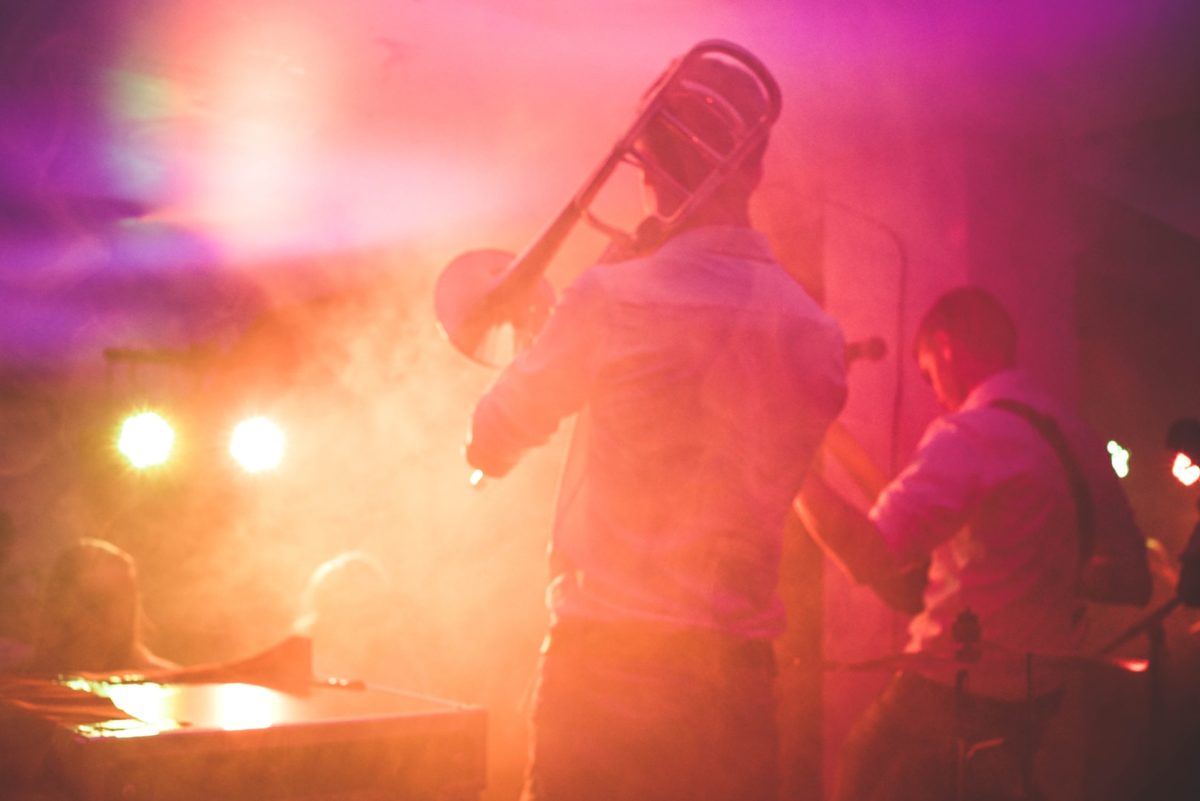I recently took on a music project for a buddy of mine – it’s an 80’s-style track to go with his new (and awesome) tabletop game, Fight to Survive. Check out his kickstarter here.
An interesting wrinkle is that, while the game hearkens back to campy buddy cop shows and classic martial arts movies like Bloodsport, the game is actually meant to span the entire 20th century. Which means the track should too.
The project is nearly finished now, and while I have largely failed to span an entire century of music in a single track, the effort taught me a great deal about the value of creating music from earlier time periods.

1. Greater Appreciation
I remember a time in public school when I visited a guy I knew somewhat and wanted to impress. He was eclectic, long-haired, and probably had John Lennon-style spectacles somewhere.
Shortly after I arrived, a friend of his showed up, and they started listening to Jimmy Hendrix. Sometimes they gasped. Sometimes they laughed. Sometimes they just nodded in reverent admiration.
Thing is, I had no idea what the fuss was about. My ears weren’t trained to appreciate the challenging riffs Hendrix was rocking.

It’s one thing to study an era of music, quite another to try and reproduce it yourself – even with the advantages of modern tools, like samplers, expression wheels, and so on, you’re going to learn a LOT.
And while I don’t recommend trying to reproduce a Hendrix-style track and expecting it to fool an enthusiast, it certainly helps you understand and appreciate the genre more.
2. (Re)learn Classic Music Styles
Things were done differently in the past, and not always for the worse. The bright snares of the 80s, or the minimalistic signal path of 50s pop and rock served important roles that can still prove useful today.
Just look at the funky groove of Uptown Funk, or the retro-vibe of Synthwave.
3. Instrumentation Inspiration
Disco may be dead (though I doubt it), but the unique combo of reverberant strings, psychedelic synths, and funky guitars defined a decade.
Likewise, there are numerous instruments, such as the ocarina, the nyckelharpa, and the clavichord, that have had their ‘fifteen minutes of fame’, but have since fallen from vogue.
And yet, often what makes certain tracks stand out, is their revival of exactly these kinds of instruments, or instrumental combinations. Why? Because often the best way to find that unique ‘new’ sound, is to look to the past.

4. 'Oldie But Goodie' Mixing
Like bygone instrumentation, delving into mixing techniques of yesteryear can be an effective way to add interest to a track that otherwise sounds like a copy of its peers.
For example, the secret to the signature snare sound of the 80s was the gated reverb, which helped to lengthen the brightest part of the drum sound: it’s transient.
Sometimes the ‘mixing’ technique actually just creates a more vintage vibe, like the crackly vinyl sounds used to create the faded quality in Teardrop, or ancient evil in Tomb of Ligeia.
5. Spot Trends. Predict Trends.
As the tired saying goes, “those who don’t understand the past are doomed to repeat it.” But those who DO have a unique opportunity to be the first to spot an emerging trend.
By researching and producing music from a variety of time periods, one can start developing a sense of how music evolves and is shaped by new technologies, as well as sociopolitical movements (didn’t I sound smart there?).
One trend we are all aware of, is what was old, eventually becomes new again – albeit in a slightly different form. Synthwave is a great example of this, as is electroswing, and the creations of the fabulous channel, Postmodern Jukebox.
The question of course is, what’s the latest trend to come? Those who understand how music adapts to the present world, may well hold the answer.
A Challenge
So, here’s a suggestion: Do some research. Learn a bit about some of the more recent trends in music over the past few decades. Then maybe pick one that holds potential, and see if you can modernize it in a track.
Alternatively, find a weird instrument sample you’ve never heard of before, and try building a track that incorporates it. Your musical understanding can’t help but benefit.

